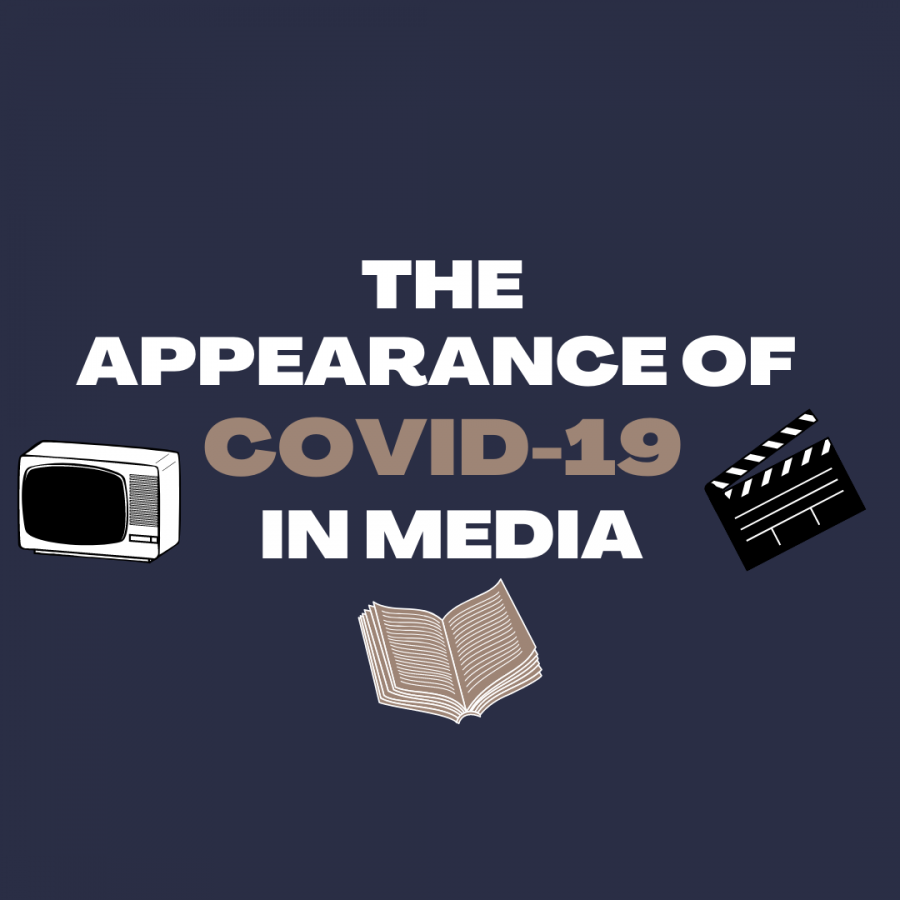The rising depiction of COVID-19 in books, film and television
Over many decades, it has been shown through various works of art that the world has seen a growing fascination in exploring the before, during and after of deadly viruses. Viral outbreaks have become an entire subsection of dystopian fiction and it comes as no surprise that writers have started to create their newest books, film and television shows with COVID-19 as a main focus.
Many individuals have found that the 2011 film, “Contagion,” displayed many similarities that feel like foreshadowing for the events that have and are currently taking place. The film depicts the quick rise in cases, the actions taken by scientists and government officials with the CDC, the rise of conspiracy and the panicked buying by civilians, events people today never imagined they would be familiar with. “Contagion” ranked in the top 10 on the iTunes charts within the first few weeks of 2020. Although the film was released about 10 years ago, “Contagion” and other pandemic movies began to immensely spike in popularity in early March 2020.
The Hollywood Reporter credited, “Corona” as the first film to center around COVID-19. The Canadian film was released on Aug. 8, 2020. “Corona” was developed within a brief period and the trailer was completed four months before its actual premiere. The plot centers around a group of neighbors who get stuck in their apartment elevator during the pandemic and when a Chinese passenger enters, they jump to accuse the passenger of attempting to infect them. The film explores racism and xenophobia against the Asian community.
With stories beginning to use COVID-19 as a plot point, many critics have questioned if it is too soon. Regardless, multiple films have already been released around the world attempting to tell a story with the virus being its key element.
Released December 2020, “Songbird” is a dystopian thriller based on COVID-19, except the film takes place in 2024 and the virus has mutated into COVID-23. In this future, those who are infected are removed from their homes and brought to quarantine camps to either recover or die. Soon after its release, the film was criticized for being tone-deaf, uninspired and exploitative.
Pertaining to television, established shows have either confirmed or have dropped hints that their next seasons will address and take place in awareness to the virus. In their season one finale, Netflix’s “Grand Army” mentions the pandemic in a podcast that a main character is listening to. A lengthy list of network television shows have also discussed COVID-19– “Shameless,” “The Good Doctor,” “black-ish” and “This Is Us” to name a few.
Brand new television shows and shorts followed a similar trend as filmmakers and many COVID-19–focused pieces have already popped up.
Netflix released their anthology series “Social Distance” which fittingly tells stories of people using technology to communicate remotely. Additionally, Freeform has come out with a romantic comedy miniseries titled, “Love in the Time of Corona” that follows four interwoven stories about love and finding connections while being quarantined.
COVID-19 storytelling has not been exclusive to film and television, it is being shown through books as well. Children’s books such as, “The Unwelcome Stranger” by Drew Edwards and Diana Nawatene and “I Love You” by Michael Ross work to give children a better understanding of the pandemic and the importance of taking preventative measures.
Anthologies seem to be a common theme amongst most published COVID-19 written works. Essayists and poets have been coming together to detail their experiences and express how they are feeling and coping with this time.
As well as more written and narrative nonfiction accounts, many dystopian and fictional stories are expected to arise from writers in the near future. It will be interesting to see how writers will approach common dystopian tropes with more knowledge on the realities of life during a pandemic.
The debate on the harms and benefits of consistently depicting COVID-19 in books, film and television while the pandemic is still occurring is a complicated battle. The answer seems specific to the individual, but it also raises thoughts about the long-term mental effects of the pandemic.
Even so, it was inevitable that COVID-19 would become material for both media and print media and be the inspiration for people to begin telling stories.


